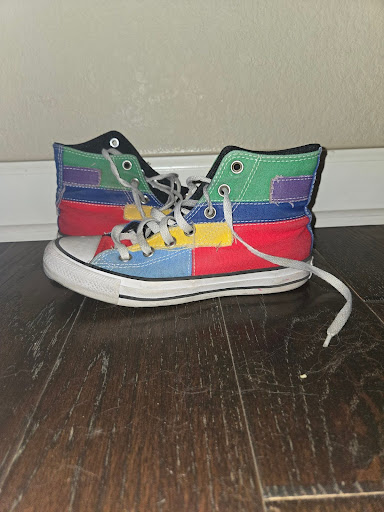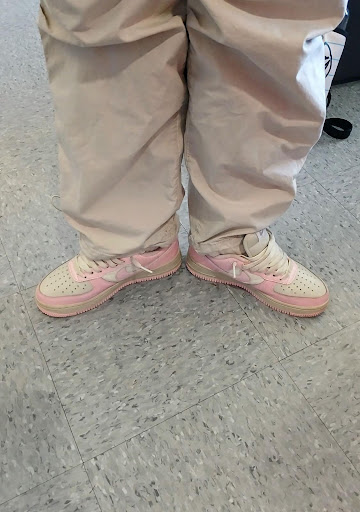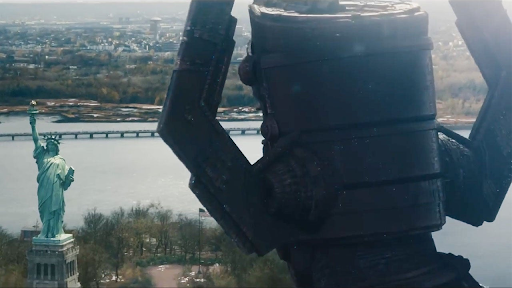
Kicks, tennis shoes, sneakers. No matter what you call them, it’s impossible to deny that these rubber-soled shoes are one of the most significant features of pop culture today, and a raging fashion trend that shows no signs of slowing. “Sneaker culture” is a term that has come to define the wearing, trading, and collecting of shoes as a hobby and form of self expression. And nowhere is this culture more obvious than high school.
Hundreds of Eaglecrest students pride themselves on their extensive shoe collections.
“My collection probably costs over $1000,” says junior Makenna Paricio.
Many others also have a large collections.
“I have 12 pairs of Converse,” senior Emma O’brien said. “And they’re like $60 each.”
“Sneakerheads,” or sneaker collectors, are often accustomed to spending large amounts of money on a pair of shoes. For many, sneaker collecting is a lifestyle. Hardcore sneakerheads eat, sleep, and breathe shoes. They know the history of sneakers, and they often appreciate the process of shoe design and creation. For them, it’s not about just owning a shoe. It’s about gathering vintage styles and limited edition designs. And while unique footwear can cost hundreds of dollars, for sneakerheads, it’s a small price to pay.
“I would spend a couple hundred dollars on a pair. I have a pair that costs over $300 dollars,” said junior Makenna Parico.
While not all Eaglecrest students are “sneakerheads”, this culture is appreciated even by those who don’t participate.
“I’m not a shoe collector, but I think it’s cool when people have shoe collections,” said junior Nikkee Graham.
There’s something awe-inspiring about seeing someone that wears a different pair of shoes every day. The dedication that goes into owning a wide variety of sneakers and matching them perfectly to every outfit is nothing short of impressive.

To hear this statement would likely be a shock to the inventors of sneakers. When the first pairs were created in early 19th Century England, it’s doubtful that anybody suspected they would grow into the global phenomenon they are today. The now-popular wardrobe staple used to be little more than simple sports shoes, and for much of the 1800s, sneakers were worn only for practicality. But through the years, the usage of sneakers off the court began to gradually increase. As the 1900s shifted into the 2000s, more and more sneaker brands began to emerge, and the prevalence of sneakers continued to rise.
Perhaps the most-worn shoe brand in high school today, Nike, was founded in 1964. Then, 20 years later, basketball legend Michael Jordan signed a contract with Nike, and Air Jordan basketball shoes were born. It’s arguable that this endorsement marked the first boom of sneaker culture.
Every high school student is familiar with the iconic Nike swoosh. To own a pair of Air Jordans is to participate in a blazing pop culture phenomenon that has taken over the lives of thousands of teens today.
“Jordans are my favorite type of shoe,” said junior Makenna Paricio. “I like them, and I think they look good with a lot of different outfits.”
Nikes were some of the first shoes to be seen as a fashion statement instead of an everyday sneaker, and it is clear that this perception has continued through the decades.
Sneakers today are not just a rubber-soled shoe, they are a form of expression.
“I like the ability to match them to my outfits and collect different colors,” said senior Emma O’Brien.
Students often use their shoes to show off their style and personality. That’s part of why sneakers have become so popular: they are versatile and can be paired with countless outfits for countless occasions. Teens love to display their shoes, especially if they are a reflection of that person’s character.
But has sneaker culture become too big? The booming industry is already worth more than 72 billion dollars, and is projected to reach over 100 billion by 2026. Some die-hard sneaker lovers own dozens of pairs of shoes. But other teens believe that extensive shoe collections are unnecessary.
“People have too many pairs of shoes,” said senior Matthew Sciacca. “And they only wear them, like, eight times, and they walk really weird to not crease them.”
One opinion is that people care too much about their appearance at school, and owning a ton of shoes only adds to that effect. Many students may also feel pressured to own expensive shoes to feel “cool” or fit in. And some find the sheer price of certain sneakers to be ridiculous.
“I think anything more than $100 is absolutely insane. Why are we spending over $100 on a shoe?” said senior Matthew Sciacca.
Regardless of your opinion on sneaker culture, it’s undeniable that shoes have grown to be a highly influential component of life at high school. Despite some controversy surrounding shoe pricing and popularity, sneakers are a beloved style choice that students will likely continue to collect and show off for years to come.







